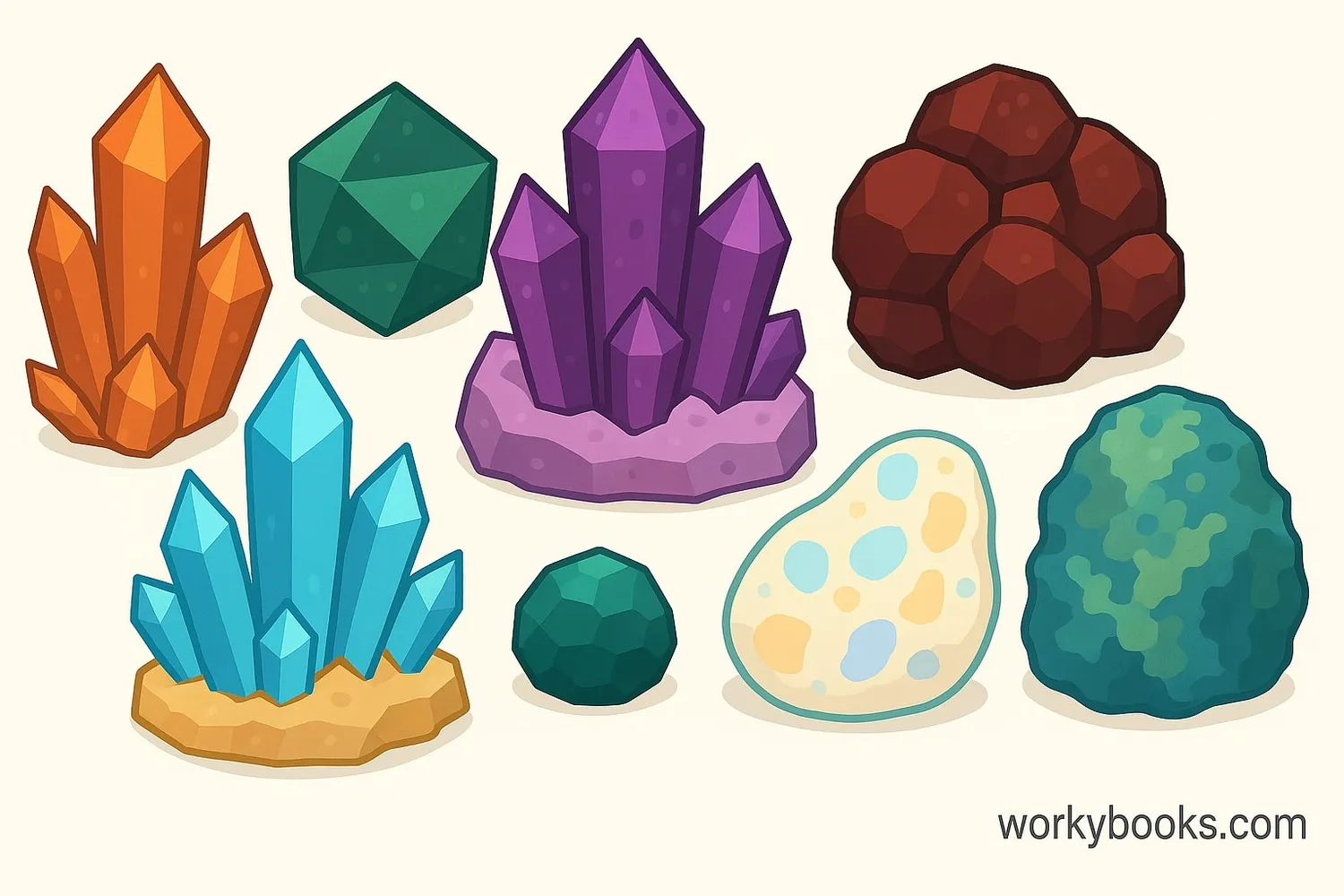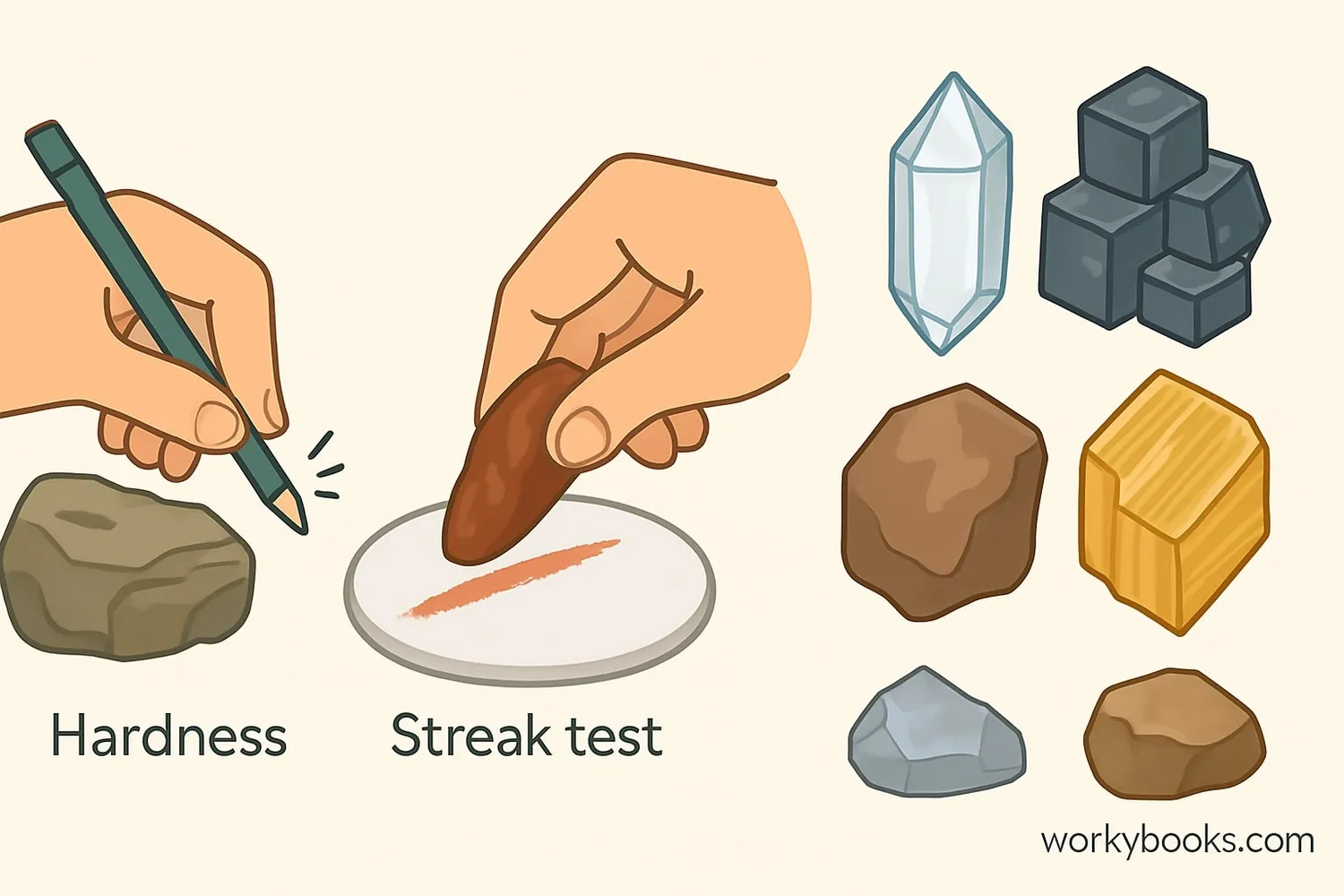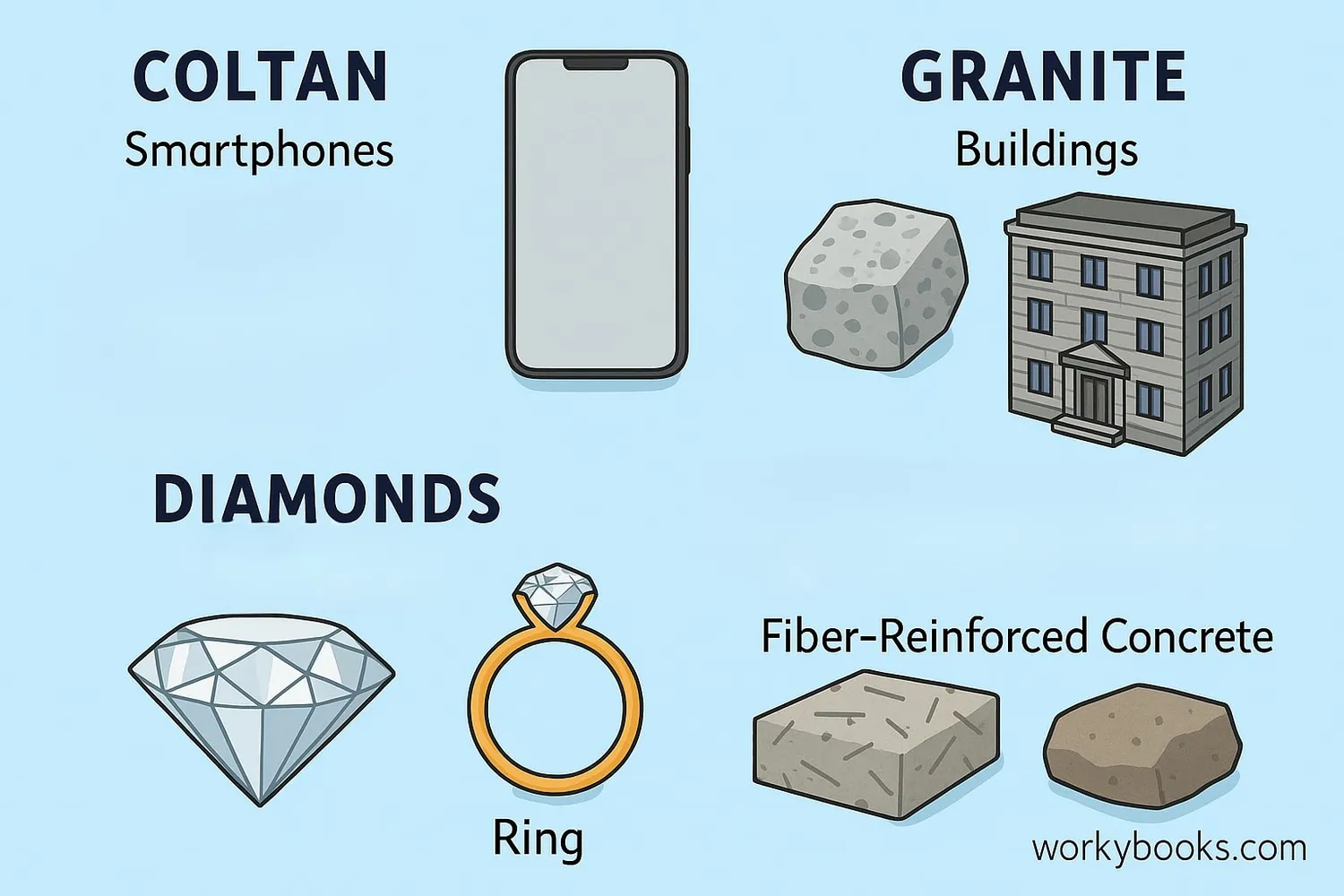Mineral - Definition, Examples, Quiz, FAQ, Trivia
Discover the building blocks of our planet and how we use them!
What is a Mineral?

Minerals are the building blocks of rocks and our entire planet! They are naturally occurring substances that were never alive.
All minerals have four special characteristics:
1. They form naturally without human help
2. They are inorganic (never alive)
3. They have a fixed chemical recipe (like NaCl for salt)
4. Their atoms are arranged in orderly patterns called crystals
Minerals are different from rocks because rocks are made of minerals mixed together. Think of minerals as ingredients and rocks as the finished recipe!
Mineral Fact!
There are over 5,000 known minerals on Earth, but only about 100 are common!
Identifying Mineral Properties

Scientists identify minerals by testing their special properties. Here are the main properties to look for:
Hardness
Measured on the Mohs Hardness Scale from 1 (softest) to 10 (hardest)
Color & Streak
Color can vary, but streak (powder color) is more reliable
Luster
How light reflects: metallic, glassy, pearly, or dull
Cleavage & Fracture
How it breaks: clean planes (cleavage) or irregular (fracture)
Special Properties
Reaction to acid, magnetism, or iridescence
Light properties are also important:
• Transparent: Light passes through clearly
• Translucent: Light passes but is blurry
• Opaque: No light passes through
Some minerals like quartz show striations - straight parallel lines on crystal faces.
Hardness Tip!
You can test hardness with common objects: fingernail (2.5), penny (3.5), nail (5.5), glass (5.5).
How We Use Minerals

Minerals are essential in our daily lives! Here's how we use them:
Electronics
Precious metals like gold in circuits; rare minerals in batteries
Construction
Gypsum in drywall; limestone in cement; granite countertops
Jewelry
Diamonds, rubies, emeralds, and other gemstones
Advanced mineral uses:
• Fiber-reinforced concrete uses basalt fiber for strength
• Scientists are researching eggshell powder in composites
• Recovery processes extract precious metals from old electronics
• Special minerals help remove heavy metals from water
Mineral mechanical properties like strength and durability make them perfect for these applications!
Minerals Quiz
Test your mineral knowledge with this 5-question quiz! Answer all questions to see your score.
Frequently Asked Questions
Here are answers to common questions about minerals:
Mineral Trivia
Discover some fascinating mineral facts!
Hardness Champion
Diamond is the hardest natural mineral (10 on Mohs scale), while talc is the softest (1). A diamond can scratch all other minerals!
Colorful Minerals
Fluorite can be almost any color! Some minerals like opal show iridescence - a rainbow play-of-color caused by light diffraction.
Minerals in Your Phone
Your smartphone contains about 30 different minerals! These include gold in circuits, tantalum from coltan in capacitors, and lithium in batteries.
Smart Concrete
Fiber-reinforced concrete uses basalt fiber (made from volcanic rock) to create stronger, more flexible structures that last longer.


